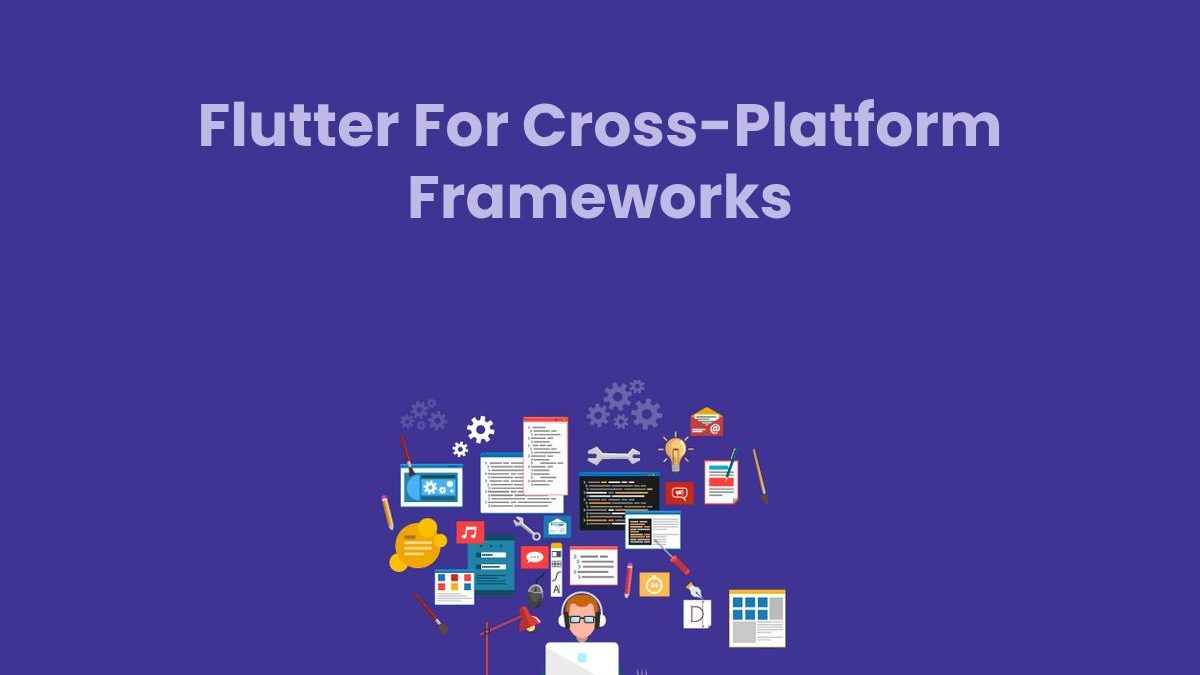Flutter For Cross-Platform Frameworks
Flutter is quickly becoming a popular choice for developers who are looking to create cross-platform applications. It’s an open-source framework that provides an intuitive development experience, allowing flutter developers to quickly create high-quality applications for both Android and iOS platforms. In this blog post, we’ll explore the benefits and challenges that come with using Flutter for cross-platform frameworks.
Table of Contents
What Is Flutter?
Flutter is an open source UI software development kit created by Google, designed to help developers build high-quality, cross-platform native apps for both Android and iOS devices. This Flutter enables developers to use a single codebase for creating applications for both platforms, eliminating the need to maintain separate codebases for each. Flutter is built with Dart language, a programming language created by Google that can be compiled to native code for both Android and iOS platforms.
The main advantages of using Flutter for flutter developers are the ease of building user interfaces, fast hot reloading features which enable developers to quickly make changes and see their results in real-time, and the ability to write native code for both Android and iOS. Additionally, Flutter is highly customizable, giving developers the freedom to design and customize their apps without being bound by the limitations of the native platforms.
Flutter For Cross-Platform Frameworks
Flutter Vs. React Native
When it comes to cross-platform frameworks, two of the most popular are Flutter and React Native. Both of these frameworks have a number of advantages, but which one is better for your project? Let’s take a look at how they compare.
React Native is a JavaScript-based framework developed by Facebook in 2015. It allows developers to create native apps using JavaScript and the React library. It is also popular because it has great integration with other frameworks, such as Redux and Relay.
Flutter, on the other hand, is an open-source mobile development platform created by Google. It uses Dart as its programming language, and allows developers to create high-quality, custom user interfaces for both Android and iOS. It also has support for widgets, making it easier to build user interfaces quickly.
Both Flutter and React Native have their own advantages and drawbacks. React Native has a larger community of developers who can provide support and advice, while Flutter has a more comprehensive set of tools that allow developers to create complex apps more quickly.
The Benefits Of Using Flutter
Flutter is quickly becoming the go-to framework for developing cross-platform mobile applications. Developers can now create amazing, high-performance apps in record time with Flutter.
One of the major advantages of using Flutter is its speed and efficiency. With Flutter, developers can create an application much faster than other platforms. Since all of the UI components are written in Dart, developers can make changes to the codebase and see the results on their device in real-time. This makes prototyping and development much faster than with other platforms.
The framework also provides a wide range of widgets for developers to choose from when building their applications. This allows developers to create intuitive and modern designs that work across both iOS and Android platforms.
Another major advantage of Flutter is its scalability. Apps created with Flutter can easily be scaled up or down depending on the platform they’re being deployed on.
This means that developers can quickly adjust their app to fit a specific platform without having to rewrite any code.
The Challenges Of Using Flutter
One of the main challenges of using Flutter for cross-platform development is that it can be difficult to learn. While Flutter is still relatively new and its API is not yet as robust as other frameworks, developers may need to dedicate extra time and effort to become proficient in Flutter development. Additionally, there are currently limited resources available to assist with learning and developing with Flutter, which could be a barrier to entry for developers new to the framework.
Another challenge for flutter developers is that not all libraries and tools are supported yet. This can make it difficult to integrate with existing systems, as well as making development more complex in certain areas. Additionally, since Flutter is still a relatively new framework, it may lack some of the more advanced features and tools available in other cross-platform frameworks.
So, these are the benefits and challenges for flutter developers.
Flutter For Cross-Platform Frameworks

